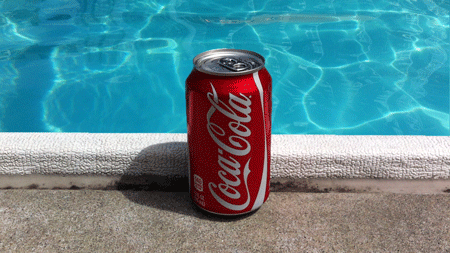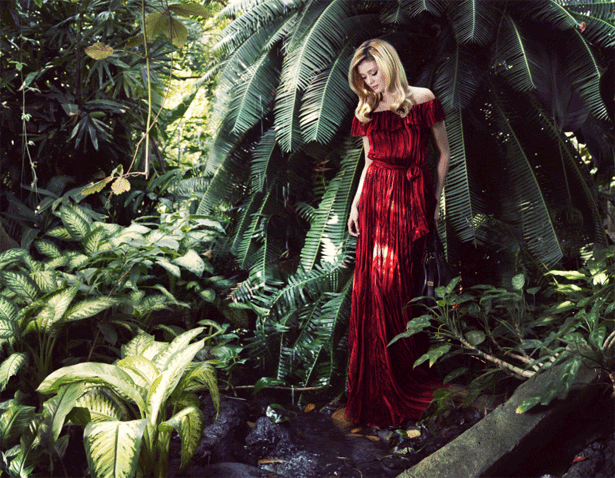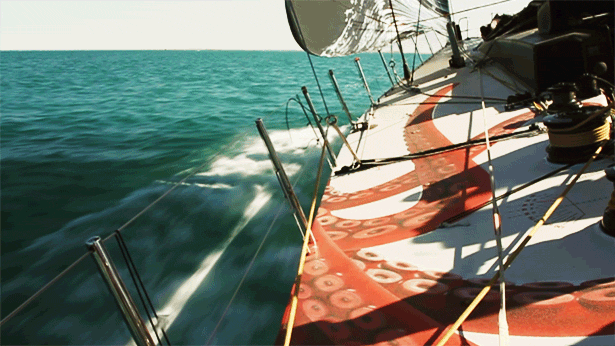When Photos Come to Life: The Art of the Cinemagraph

Jamie Beck and Kevin Burg
These aren’t your ordinary GIFs. The cinemagraph is a medium pioneered (and named) by husband and wife team Jamie Beck and Kevin Burg in which individual instants of motion are isolated against a static image. This dichotomy creates moments that are quiet and contemplative, elevating the humble GIF into something much more refined.
Jamie Beck and Kevin Burg spoke to Joseph Lin about the medium.
 Joseph Lin: What is a cinemagraph?
Joseph Lin: What is a cinemagraph?
Kevin Burg: I think of it as a living photograph. It’s a photograph that has a living moment inside of it.
JL: How did you come up with the name?
KB: We were just playing with Greek roots. We were researching how they came up with the term photography. [Editor's note: the word photograph is generally accepted to have derived from the Greek terms photos, meaning of light and graphō, meaning I write.]
Jamie Beck: We had to give it a name because we’d go to a photo shoot and people kept saying, Make one of those moving things. I was so tired of people saying “that moving thing,” so we came up with a name for it.
KB: And calling it a GIF didn’t seem to work either, because a GIF can mean so many things. This is a specific thing with its own criteria. Its own medium.
JB: The name cinemagraph went generic overnight. I tweeted what we named it and it went crazy from there.
KB: By the time we talked to the trademark office, they were like, this is a descriptive, generic term.

Jamie Beck and Kevin Burg
JL: Can you explain the process?
JB: When we first started doing it, the question was can you make a living moment that exists within the GIF format? I was going out with a 5D Mark II, with a built-in video capability, shooting stills and a little bit of video, and then Kevin would hand-stitch the living moment. Now we shoot with a cinema camera, so any still that comes out of it is equivalent to a 5D Mark II, so it makes it a little easier to shoot living moments.
KB: It’s really about combining the stills world and the motion world. Cameras now are a blurry world between the two. It’s not a still camera or a video camera. For instance, an iPhone does both off the same sensor.
Every frame is like a 35mm photo. So what is a still photo and what is motion, anymore? It’s hard to differentiate between the two. We are responding to that, sort of coming together of those two technologies.

Jamie Beck and Kevin Burg
JL: How long does it take to actually create one?
KB: On average it takes two days to finish one.
JB: It depends. Human movement is a lot trickier and it takes longer and it can take up to a week just working on that.

Jamie Beck and Kevin Burg
JL: How do you choose these moments and what do you look for?
JB: It took a while for us to rethink the way we looked at the world to see cinemagraphs. And then once you can train your eye to do that, things open up. You just see something different. Seeing these little live moments that exist around you and being really aware of them. You stop everything else around it and focus on this one really beautiful, living thing.
You have to be really mindful about where you want the attention to go. A lot of that happens in the post-production, deciding what is alive and how long it will be alive.
KB: And there should be a reason for it to be alive. Not just something moving for the heck of it. We want to be economical with how we use this motion.
JB: It’s also fun because it allows people to see through your eyes. I have one of Grace Coddington sketching at the Ralph Lauren show at New York Fashion Week. It was fascinating because I was watching her sketch and everything else kind of went away. Disappeared. I didn’t see anyone or anything else. Then you get to recreate that in a cinemagraph. It’s like everyone is watching her sketch the way I was watching her sketch.

Jamie Beck and Kevin Burg
JL: Why do you like this medium?
JB: It’s about being a storyteller. Sometimes people ask me is film better than digital? You choose the right tool for the job. Sometimes making a video is the right tool for the job. Sometimes a cinemagraph will be the best outcome to share a moment. Sometimes a photograph. You apply the correct medium to what you want to do, what you want to say.

Jamie Beck and Kevin Burg
Jamie Beck is a photographer and Kevin Burg is a digital artist. The husband and wife duo have collaborated as artists since 2009.
Joseph C. Lin is an Associate Photo Editor for TIME.com
 In the year since the term "cinemagraph" was first coined by graphic designer Kevin Burg and photographer Jamie Beck, the images have become a class of digital photography all their own.
In the year since the term "cinemagraph" was first coined by graphic designer Kevin Burg and photographer Jamie Beck, the images have become a class of digital photography all their own.









